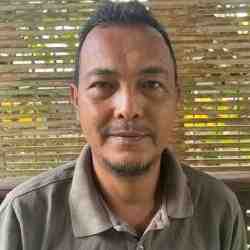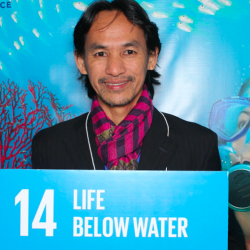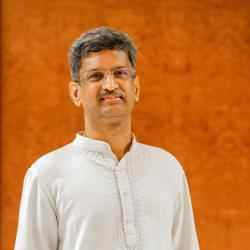Introduction
Rom Whitaker is showing how India's disadvantaged tribal groups can develop environmentally sustainable livelihoods from generally wild animals. He's also educating the broader public to its environmental situation through animal parks and popular films.
The New Idea
For Rom Whitaker, wildlife conservation must be more than an emotional appeal to protect endangered species. In an increasingly crowded world, parks without people can only be the rare exception. For the world as a whole, people and animals must learn to live together. Rom is demonstrating the kind of creative adjustments that India must learn to make if it is to achieve equilibrium.
The founder of several cooperative societies of the South Indian Irula tribal group, Rom has helped them work out new ways of earning income using traditional skills developed over generations. The Irula are traditional hunter-gatherers who are finding that their traditional sources of income are drying up as modern society presses in on all sides. They are, among other things, masters at catching snakes, and they used this skill to sell snakeskins until a ban on such trade was passed in 1972. Rom thought of an alternative – a snake venom industry. This co-op extracts venom from poisonous snakes and sells it to companies that need it to produce anti-venom serums. After three extractions, the snakes are released back into the wilderness.
The Irulas are also adept at catching rodents, having long used them as a supplementary food source. Rom has studied the efficiency with which the Irulas can control destructive rodent populations where food is being grown and stored, and has concluded that they are as effective as rodenticides, without the latter's harmful side effects. The Irulas charge a fee for rooting out the rats and also sell their carcasses as feed to the Madras Crocodile Bank, as protein for poultry feed, and for other experimental uses.
Rom's concern for reptiles, which dates from his boyhood, also led him to more direct efforts to educate the public. He founded and built up the Madras Snake Park, which is now visited by a million visitors a year. He has since founded and is building up the Madras Crocodile Bank, which breeds crocodiles, carries on research, and helps educate the public regarding these feared animals.
Now he's starting to influence even larger audiences with his vision of a world where people and the world's other creatures live both together and in creative harmony. Specifically, he's been learning to master the film and radio media. With several award-winning documentaries to his credit, he has now conceived and won basic support for a feature film designed for the mass entertainment market but containing authentic wildlife photography and a powerful environmental message.
The Problem
India, very much a democracy, won't change its environmental ways until the public understands the damage being done and changes its own ways and insists on policy change. This awakening is in progress, but there is a long way to go.
Already one of the world's most crowded lands, the subcontinent of all the world's major regions cannot bring environmental peace without making the people a part of the solution. But the old balances between people and nature cannot be restored by returning to old patterns. Most have been forever broken by population growth, a changed economy, and new awareness and expectations.
India's 60 million tribal peoples, almost always among the country's poorest, have been progressively displaced by, first, habitat-destroying deforestation and, then, government afforestation programs that (a) design forests of little or no use to them and (b) often prohibit their traditional uses of its resources. These prohibitions, generally conceived for conservationist purposes, commonly leave the tribals desperate and, as a result, indirectly cause other environmental damage, including new waves of deforestation.
India's ecosystem and its animals are suffering at least as much as its tribals. Crocodiles, for example, were endangered, as worldwide demand for their skins has remained constant while their population has plummeted. Poor people dependent on this and similar trades need to understand their risks if the population on which they depend declines. Understanding, however, is unpersuasive in the face of hunger. A sustainable environment must also sustain the local people.
The Strategy
Rom is pursuing several closely related tracks.
First, he continues to develop and demonstrate ways in which people, especially tribal people, can derive livelihoods from their environment without damaging it. Recently, for example, he's been involving Irula women in new forestry roles.
He also has more work to do to help these models achieve their full potential impact. In several cases, that means winning regulatory changes. Thus, for example, having successfully demonstrated crocodile breeding, he'd like to get the rules changed to allow licensed facilities to sell crocodile meat and products. Otherwise an expanding crocodile population becomes a very expensive proposition.
He's also beginning to spread his models directly. He recently visited with tribal groups in other parts of India that have skills and traditions analogous to the 100,000 strong Irulas to see if they could readily and quickly benefit by taking up some of the models he's developed with the Irulas.
Important though these models of new human/environmental collaboration are, Rom feels that the country's environmental problems are so acute that he needs to reach far larger audiences. As a result he writes regularly for the press and in more specialized journals. His highly successful snake park and newer crocodile farm are further steps in this direction.
However, even they don't satisfy his sense of urgency. As a result he's been learning how to design and produce films for larger and larger audiences. His first film, Snake Bite, won the "best professional film" at an international wildlife film festival in 1986. Now he's conceived, designed, and is orchestrating most of the resources for a mass popular film. It would both convey a powerful environmental message and meet the test of wide box office sales.
The Person
Rom grew up with American and Indian parents in both countries. He settled in India 22 years ago (in an Irula area of Tamil Nadu) and became an Indian citizen.
In high school in the hills of South India he loved to go camping and hiking. His lifelong interest in snakes was strengthened by the specimens he found and caught on these hikes. During several college-age years in America, he developed some of his early expertise handling and managing snakes at a Florida herpetological center.
On returning to India, he continued to develop these interests, both with the Irula and later by founding Madras's snake farm and, later, its crocodile bank. He's now learning how to carry his vision of people and nature working together in sustainable ways to the country as a whole.




